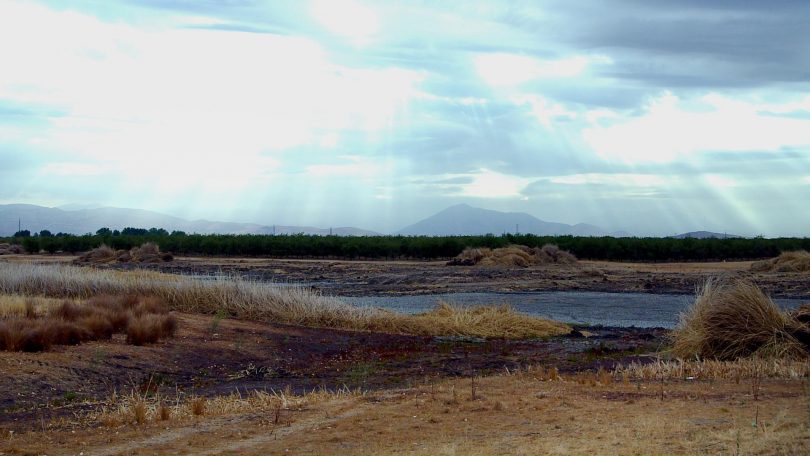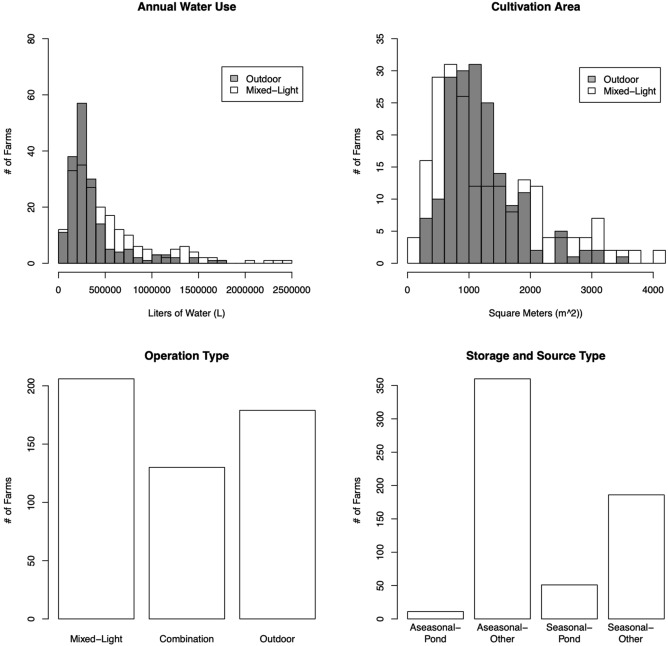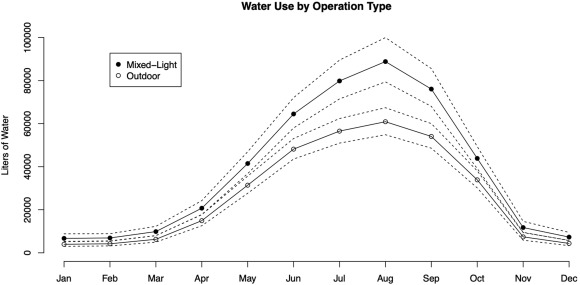California’s water crisis is undeniable. Extreme droughts and water shortages have plagued the state for decades. In 2015, consumers were required to cut water usage by 25%. It therefore comes as no surprise that legal cannabis cultivators in California also face restrictions on water use.
The State Water Resources Control Board has established regulations that, among other actions, require cultivators to limit surface water diversion during the dry season between April and October. Research published in the Journal of Environmental Management in 2020 examined cannabis grow ops in Northern California to determine how certain practices “affect the timing and amount of water extracted from the environment.” [1]
The authors initially explain that cannabis cultivation in Northern California is rural and therefore often taxes natural water sources like streams and springs. The study collected data from legal, registered cultivators (Humboldt, Trinity, Mendocino, and Sonoma Counties) who relied on professional consultants to prepare water reports. This resulted in 608 qualifying reports; notably, 1,094 other reports were excluded for lack of professional consultation and/or poor self-reporting.
A series of variables were tracked:
- Cultivation area (ft2)
- Operation type: outdoor or mixed light/combination
- Water applied to plants per month (gallons)
- Water source for plants: municipal, rain, surface water, delivery, springs, water bladder, tanks, pond, or well
- Water added to storage per month (gallons)
- Storage type—pond or other, such as tank
- Storage capacity (gallons)
- Water source for storage—municipal, rain, surface water, delivery, springs, or well
- Seasonal vs aseasonal: some farms used only seasonal water sources, such as rain/ponds
The researchers confirmed cultivation area and type using aerial imagery, namely 2016 NAIP (National Agriculture Imagery Program). To create the data model, they selected dependent variables water use (plant demand) and water extraction (withdrawal from the watershed). The predictor variables and water use by cultivation type are summarized in the graphics below, reprinted (without modification for educational purposes) from the open access study.
Reprinted from: Dillis C, et al. Water storage and irrigation practices for cannabis drive seasonal patterns of water extraction and use in Northern California. Journal of Environmental Management. 2020;272(11095). License: CC BY-NC-ND 4.0
Reprinted from: Dillis C, et al. Water storage and irrigation practices for cannabis drive seasonal patterns of water extraction and use in Northern California. Journal of Environmental Management. 2020;272(11095). License: CC BY-NC-ND 4.0
Overall, there was “substantial variation” in water use and extraction. One key conclusion is that the mixed-light operations use more water per area, likely due to denser arrangement of plants. The cultivation period was longer as well although water use during the off-season was only slightly greater compared to outdoor farms.
Plant demand for water was greatest during the summer and early fall months (the main growing/forbearance season). Water extraction during the off-season was greater than water use across operations, reflecting storage/preparation efforts. This was especially true for farms relying on seasonal water.
Nonetheless, stored water generally failed to meet plant demand. The authors point out that “many farms may need to expand water storage capacity or find other sources of water in order to forbear from surface water extractions during the growing season, as currently required…” Larger operations were found to be particularly susceptible to shortages of stored water during the growing season.
The use of ponds for irrigation was a successful technique to avoid water extraction during the forbearance period. However, this technique was used by only 10% of the farmers in the survey. Other regulatory requirements make the use of ponds challenging. Groundwater well drilling was the more common source of water extraction. The impact of this strategy is unknown but believed to be detrimental in the long term.
Finally, it must be mentioned that despite the 600+ legitimate farmers surveyed here, “the majority of cannabis cultivation in the region remains unpermitted.” Hopefully, this research can support efforts to protect and promote California’s legal industry and water supplies. [1]
Reference
- Dillis C, et al. Water storage and irrigation practices for cannabis drive seasonal patterns of water extraction and use in Northern California. Journal of Environmental Management. 2020;272(11095). [Impact factor: 4.175; Times Cited: 2 (ResearchGate)]
Image: U.S. Department of Agriculture, Cynthia Mendoza – 20141119-OC-CM-0005, Public Domain










